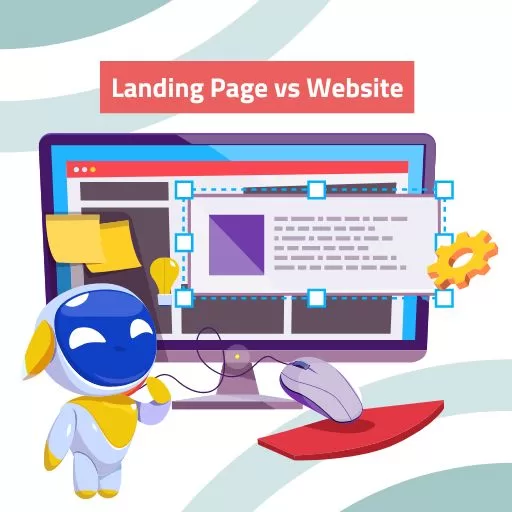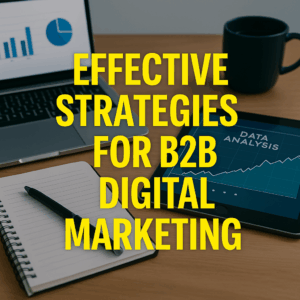In the world of online marketing, two terms that often come up are landing page and website. While both are essential tools for building an online presence, they serve different purposes and have distinct differences. This article will explore the difference between a landing page and a website.
What is a Landing Page?
A landing page is a standalone web page designed to capture visitors’ attention and encourage them to take a specific action. A landing page aims to convert visitors into leads or customers by offering them something of value in exchange for their contact information.
Landing pages are typically used in marketing campaigns to drive traffic to a specific product, service, or offer. They are often designed to be simple and straightforward, with a clear call to action (CTA) that tells visitors what to do next.
Landing pages are usually not connected to the main website navigation and are not intended to provide a comprehensive overview of a company’s offerings. Instead, they are focused on a single goal and designed to be laser-focused on converting visitors.
Some common examples of landing pages include:
- A page that promotes a new product launch
- A page that offers a free trial or demo
- A page that invites visitors to download a white paper or e-book
- A page that encourages visitors to sign up for a newsletter
What is a Website?
On the other hand, a website is a collection of related web pages that together form a cohesive online presence for a business or individual. Websites typically have a main homepage that serves as an introduction to the site and provides a high-level overview of what visitors can expect to find.
Websites are often designed to give visitors a comprehensive view of a company’s offerings, including products, services, company history, contact information, and more. They are usually organized into sections and sub-sections, with a navigation menu that allows visitors to explore different parts of the site easily.
Websites are not usually focused on a single goal, as landing pages are. Instead, they are designed to provide visitors with a wide range of information and resources, including blog posts, videos, product descriptions, and more. They are intended to be an online destination for visitors to learn more about a company and its offerings.
Key Differences between a Landing Page and a Website
Now that we have a basic understanding of what a landing page and a website are let’s explore some of the key differences between the two.
1. Focus
As mentioned earlier, the main difference between a landing page and a website is their focus. Landing pages are laser-focused on a single goal, while websites are designed to provide visitors with a wide range of information and resources.
2. Design
Landing pages are typically designed to be simple and straightforward, with a clear call to action (CTA) that tells visitors what they need to do next. They are often stripped down to their most essential elements, with minimal navigation and distractions.
Websites, on the other hand, are usually more complex and designed to be visually engaging. They often include images, videos, and other multimedia elements to help tell a company’s story and showcase its offerings.
3. Navigation
Landing pages usually need navigation menus, as they are designed to be focused on a single goal. Instead, they often include a single CTA button or form to capture visitor information.
On the other hand, websites are typically organized into sections and sub-sections, with a navigation menu that allows visitors to easily explore different parts of the site.
4. Content
Landing pages usually focus on a single offer, with a headline, subheadline, and a brief request description. They may also include social proof, such as customer testimonials, to build trust and credibility.
On the other hand, websites typically have a much broader range of content, including product descriptions, blog posts, about pages, and more. They are designed to give visitors a comprehensive view of a company’s offerings and expertise.
5. Traffic
Landing pages are often used in marketing campaigns to drive targeted traffic to a specific offer. They may be promoted through email marketing, social media, or paid advertising.
On the other hand, websites are designed to be online destinations for visitors to learn more about a company and its offerings. While they may also be promoted through marketing campaigns, they are typically designed to be found through organic search results.
Which One Should You Use?
Both landing pages and websites have their place in online marketing. Landing pages are great for driving targeted traffic to a specific offer and converting visitors into leads or customers. On the other hand, websites are designed to be online destinations for visitors to learn more about a company and its offerings.
If you are running a marketing campaign and want to drive targeted traffic to a specific offer, a landing page is a way to go. If you want to provide visitors with a comprehensive view of your company’s offerings and expertise, a website is the better choice.
It’s also worth noting that you can have both a landing page and a website. Many businesses use landing pages as part of their overall website strategy. For example, a company may have a landing page promoting a specific product or service, with a CTA that takes visitors to a page on their website with more information.
Conclusion
In conclusion, while landing pages and websites may seem similar at first glance, they serve different purposes and have distinct differences. Landing pages focus on a single goal to convert visitors into leads or customers. In contrast, websites are designed to provide visitors with a comprehensive view of a company’s offerings and expertise.
Both landing pages and websites have their place in online marketing, and the best choice depends on your specific goals and needs. By understanding the differences between the two, you can decide which one to use for your online marketing efforts.




